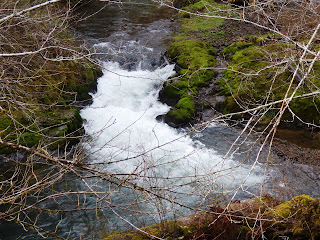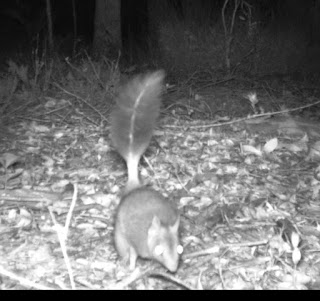Recently, I discovered the best rainy day method of avoiding housework ever. It is called Zooniverse. It enlists the aid of people on computers to go through photos and identify what they see. It is not all about animals. There seems to be a people-powered project at Zooniverse for almost anything. Check it out here:
https://www.zooniverse.org/about
The project I am now addicted to is Numbat Discovery. Here's what hooked me...
"We need you! WWF–Australia needs your help to assist researchers
estimate the population of the rare and elusive numbat in south-west WA.
Once abundant in southern Australia, this unique termite-loving
marsupial, is now only found in a small area in southwest WA" (that's Western Australia not Washington state). ...The Upper Warren region in south Western Australia supports the largest
remaining population of endangered numbats and is one of only two
natural populations remaining in the world."
And so I spend happy hours pouring over trail camera captures trying to identify animals I've mostly never heard of much less seen... and can't pronounce... hoping to spot the "rare and elusive numbat".
 |
| Woylie, I think: Brush-tailed Bettong, a very rare Macropod (big foot ... kangaroo-like) that happens to be plentiful in the cameras in this Upper Warren area. |
Another Woylie...
 |
| Another Woylie, demonstrating his kangaroo imitation |
 |
| This Woylie, I gather from other's comments, is carrying nesting material with his tail |
We see a lot of Woylies, otherwise known as Brush-tailed Bettong and are critically endangered and very rare... except in these photo captures... Maybe they just like hanging out in front of cameras.... or maybe the same ones hop into view over and over.
 |
| Koomal, I think: Brush-tailed possum, a marsupial. These like to climb on the cameras. |
 |
| Here is a Koomal with baby astride! |
Although many Brush-tailed possums (Koomals) appear in the videos, I have only seen (to identify) one Ring-tailed Possum (Ngwayir). They are critically endangered. I saw this same video clip on two different days. Maybe they're running out of things to show me.
The Quenda or Southern Brown Vandicoot, is another marsupial. It looks like a pointy-nosed furry rat to me
After 600 "identifications", I finally saw an echidna, spiny anteater... Since then, I've seen a few more.
Most of the photo captures are of Western Gray Kangaroos
 |
| A couple curious W. Gray Kangaroos (that aren't gray) |
 |
| A Kangaroo with joey in her pouch |
After many hours of staring at these video captures, I saw a rarity in danger of extinction: Chuditch or Western Quoll, a carnivorous marsupial. I like the ones that are easy to identify because they have obvious spots or stripes...
After some 3 or 400 more, I saw a second Chuditch!
And after 700, I thought I saw one more...but it turned out to be the same one. I just stopped it on a different frame. Okay, I'll quit adding them now...
Ah, but here is another I seldom see in these video captures: the Brush-tailed Phascogale. Really, that's it's name.
I think the image below is of a Tammar Wallaby, by the white line from eye to mouth. They are uncommon in this area, apparently. At least, I haven't found many I could identify. They ask us to guess since lots of people will be looking at the same image and if there are lots of different answers, the researchers will take a look. Good thing their research doesn't depend on my answers.
Although the Western Brush Wallaby is much smaller than the Western Gray Kangaroo, I have a hard time telling size in these photos. This one I'm pretty sure is the Wallaby by the white line from ear to nose, black-tipped ears, and black striped rump.
In the photo below you can see the white line on the face, white spots behind ears, black tip to the ears and black feet.
And best of all, here's one with a juvenile behind mom!
Mostly, the video captures have only part of an animal and we are supposed to figure out what animal that fur or ear or tail belongs to. And many of the captures have nothing in them... just waving grass. A few have birds. I missed out on a pretty blue one before I knew I could steal these photo captures. I have not yet tried to identify these birds... but I think they are varieties of Currawong (from a quick google search). I have cropped the photos to make the birds visible, but a little blurry.
Update: Fred Ramsay has kindly agreed to identify the birds I see. The white-backed bird is an Australian Magpie. The others are all Gray Currawongs (dark form). I am putting more details, as Fred gives them to me, in my Birds blog here: http://lindafink-birdnotes.blogspot.com/2018/03/birds-of-western-australia.html
I do recognize Emus. Their chicks are adorable!
... and a lot smaller than their parent!
This is my favorite. Too bad there's no sound with the videos. I suspect this bird had a lot to say to the camera.
Happily, the marsupial anteater we are looking for, the numbat, is easy to recognize. Also happily, it is not nocturnal like so many of these critters. And, on the second day of searching, one of the video captures had a Numbat in it! I ran downstairs to tell Johnny and make him climb the stairs to see it. After all, how many people in the world have ever seen a Numbat?
It's a little hard to pick out... but it's on the right edge of the picture.
Here it is cropped...
After 700 or so "identifications", I saw my second Numbat... moving fast...
And, after over 1,000 "identifications", I saw a goanna, a type of Monitor Lizard common in Australia, but not common in these video captures.
The original photo, before cropping, may give a better indication of size of this lizard. It's big.
I'm starting to look forward to rainy days... so I have an excuse to stay inside and hunt for Numbats... and see what other strange creatures might pop up in video captures from Western Australia. After over 1600 classification, I found Numbat #3
Aren't they beautiful?
... the search continues...














































